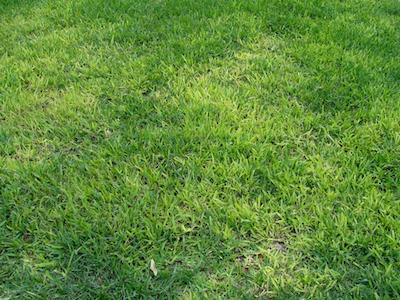
Take-all root rot disease on St. Augustine grass starts with neon yellow foliage.
May 16, 2023 - Take-all root rot is a fungal disease that causes bright yellow, weak, brown, and dead patches in turfgrass. This disease is mostly associated with St. Augustinegrass. Take-all root rot is caused by a fungus that lives in the soil. The fungus is commonly found in both diseased-looking and apparently healthy-looking turfgrass. It lives in thatch, which is a layer of plant roots, stolons, and decaying plant matter. The fungus can produce spores but spreads mainly through the roots and stolons. The disease is not usually transported by mowers or foot traffic, as with brown patch (“large patch”). Take-all root rot (TARR) is more likely to be spread when infected grass, thatch, or soil is moved elsewhere.
The symptoms of take-all root rot often appear in spring or early summer when the turfgrass emerges from winter dormancy. However, they may appear anytime during the growing season when the grass is stressed by heat, drought, or shade. The most obvious initial symptom is neon-yellowish foliage that eventually turns brown and wilts. The turf thins out, leaving brown, irregular patches from 1 foot to more than 20 feet in diameter. The roots of infected grass are usually short, black, and rotten, making it easy to lift the stolons from the soil. The nodes, or stem joints, may also be discolored.
To confirm a diagnosis, you can submit a sample to the Texas A&M Disease Diagnostic Lab in College Station. For information and instructions visit https://plantclinic.tamu.edu/.
On St. Augustinegrass, take-all root rot may be easily mistaken for brown patch or chinch bug injury. However, chinch bug damage generally occurs during hot dry summer in full sun only and brown patch is more common during cool, moist falls and early springs.
To prevent take-all root rot, the most effective approach is to take proper care of the grass. The disease usually becomes a serious problem when the turfgrass is under stress because of unfavorable environmental conditions and improper management including excessive shade, herbicide injury, soil compaction, temperature extremes, imbalanced soil fertility, inappropriate irrigation scheduling, improper mowing height or frequency, or any other condition that weakens the turf. Encourage healthy root development as much as possible. Make sure that the area drains well at and below the soil surface. Turf areas that remain wet are prone to the disease. Improve the drainage and avoid watering too frequently. It is better to water infrequently but deeply (6 to 8 inches deep) than to give the grass frequent, shallow watering. My personal advice is to water once a week (one inch per application), minus rainfall, during June, July, and August only.
Unfortunately, diseases can’t be easily cured. They have to be prevented. The healthy- new growth can be protected with one or more applications (spring and fall, when the disease is active) of a fungicide containing azoxystrobin, myclobutanil, or propiconazole. For more information on controlling this serious disease and how to tell it from chinch bugs and brown patch see the Texas A&M AgriLife Extension Service fact sheet titled Take-All Root Rot, under “publications” at https://aggieturf.tamu.edu/. A lawn that’s already infected must be nursed back to healthy following best management practices. One that is totally dead will unfortunately have to be replanted.
Greg Grant is the Smith County horticulturist for the Texas A&M AgriLife Extension Service. He is the author of Texas Fruit and Vegetable Gardening, Heirloom Gardening in the South, and The Rose Rustlers. You can read his “Greg’s Ramblings” blog at arborgate.com and read his “In Greg’s Garden” in each issue of Texas Gardener magazine (texasgardener.com). More science-based lawn and gardening information from the Texas A&M AgriLife Extension Service can be found at aggieturf.tamu.edu and aggie-horticulture.tamu.edu.









